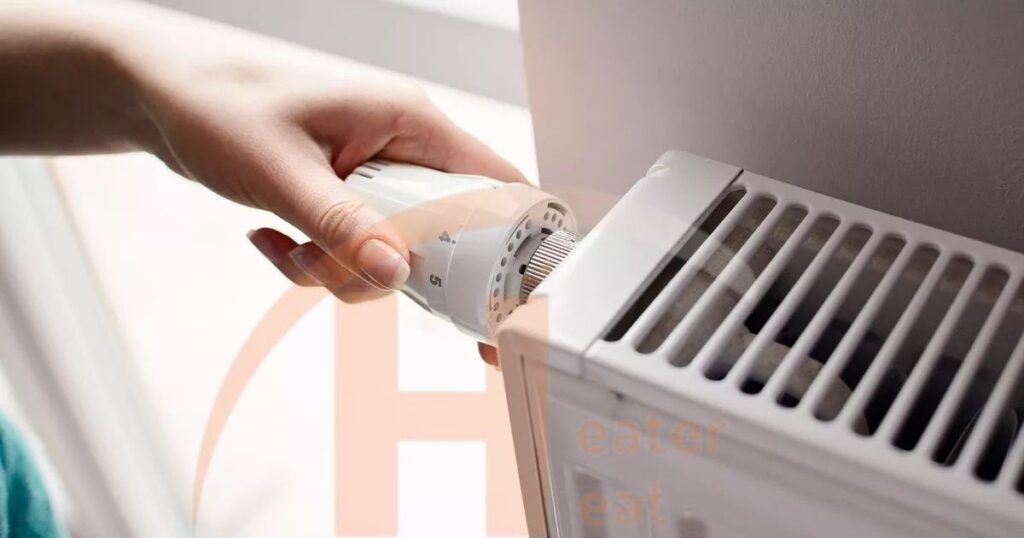Electric heat strips in an air handler are electrically powered elements that generate heat for indoor spaces. Installed in the air handler unit, they efficiently warm the air, providing effective heating in HVAC systems.
Unlock the secret to cozy interiors with a closer look at electric heat strips in air handlers! Have you ever wondered how your HVAC system keeps you warm? Those unassuming heat strips in the air handler are the silent heroes, working tirelessly to transform electrical energy into the comforting warmth that envelopes your space.
These are heating elements in air handler that play a crucial role in regulating indoor temperature. Installed within the air handler unit of HVAC systems, these strips efficiently convert electrical energy into comforting warmth. Whether in residential or commercial settings, the functionality of these strips sheds light on the science behind a cozy and controlled indoor environment.
Components of Electric Heat Strips

These Strips consist of crucial components that collectively contribute to their functionality within air handler units.
Heating Elements
The heating elements play a pivotal role. These elements, often composed of nickel-chromium alloys, serve as the core components responsible for generating heat when an electrical current passes through them.
Control Mechanisms
Accompanying the heating elements are control mechanisms that ensure the effective and controlled operation of the electric heat strips. These mechanisms, which can include thermostats or electronic controllers, play a key role in regulating temperature settings. By adjusting the heat output based on the desired temperature, these controls contribute to maintaining a comfortable indoor environment.
Safety Features
These strips are equipped with various safety features to prevent potential risks and hazards. These safety measures are crucial for avoiding overheating issues that could lead to damage or, in extreme cases, fire. Safety features include thermal cutoff switches and limit controls, which serve to manage temperatures and enhance the overall safety of the system.
Benefits of Electric Heat Strips

These Strips offer a range of advantages, making them a valuable component in HVAC systems. From remarkable energy efficiency to quick and responsive heating, these strips provide notable benefits that cater to both cost-conscious users and those seeking immediate and customizable indoor comfort.
Energy Efficiency
“Electric heat strips are highly efficient in converting electrical energy into heat. This efficiency, derived from the electricity an electric heater uses, not only results in cost savings for users but also aligns with environmental considerations by minimizing energy wastage. The ability to produce substantial heat output from the electricity consumed makes them a resourceful choice in HVAC systems.”
Quick and Responsive Heating
One significant advantage of electric heat strips is their swift response in generating heat. Unlike some traditional heating methods that may take time to reach the desired temperature, heat strips can rapidly produce warmth. This quick response is especially beneficial in situations where immediate indoor temperature adjustment is crucial, such as during cold weather conditions.
Zoning Capabilities
Heat strips often come equipped with zoning capabilities, allowing for targeted heating in specific areas. This feature enhances customization, enabling users to control the temperature in different zones within a space. Directing heat to specific areas as needed can optimize comfort levels and potentially reduce energy consumption in unused or less frequently occupied spaces.
Different Sizes of Heat Strips

The size of heat strips plays a pivotal role in determining the heating capacity and overall performance of the system.
Small Heat Strips
Small heat strips are designed for applications where space is a premium, such as apartments or smaller residential units. Despite their size, these strips are adept at providing localized warmth efficiently. They work well in mild climates or as supplementary heating in specific areas, offering flexibility and cost-effectiveness. Homeowners can enjoy the benefits of targeted heating without overwhelming utility costs.
Large Heat Strips
large heat strips are engineered for more substantial heating demands. Ideal for larger residential spaces or commercial settings, these heat strips deliver robust warmth to cover expansive areas. Their capacity to generate higher levels of heat makes them suitable for colder climates, ensuring that the entire space remains comfortably warm.
Optimizing Electric Heat Strips

These heat strips play a pivotal role in maintaining indoor comfort, especially during colder months. To ensure their efficiency and cost-effectiveness, a strategic approach towards optimization becomes paramount.
Demand
The demand for heat strips is tied to the heating needs of the space. The system responds to the temperature requirements by activating or deactivating the heat strips based on the demand for warmth. Exploring how the demand is sensed, measured, and managed provides insight into the dynamic nature of electric heating systems.
Enhancing Defrost Capabilities
Cold climates present unique challenges for HVAC systems, especially those equipped with heat pumps. Heat strips play in combating frost buildup on outdoor units during extremely low temperatures. When the outdoor coils of a heat pump accumulate frost, it hampers the system’s efficiency.
Electric heat strips come into action during the defrost cycle, producing heat to melt the frost and ensure the system continues to operate optimally. The mechanics behind defrost capabilities and heat strips contribute to this process in colder regions. By enhancing defrost capabilities, HVAC systems can maintain reliable performance even in the harshest winter conditions, providing consistent heating without compromising efficiency.
Emergency Heat
Emergency heat in HVAC systems serves as a backup plan when the main heating system falters. It activates automatically when needed, providing a reliable source of warmth during equipment malfunctions or extremely cold weather. Electric heat strips take center stage in this emergency mode, ensuring that your home stays comfortably heated even in challenging conditions.
It is a safety net for maintaining indoor comfort and preventing temperature fluctuations when your primary heating system faces issues. Understanding how emergency heat operates is crucial for homeowners, offering reassurance and a dependable solution for unexpected heating challenges.
Heat Strips Compared to Other Heating Options

Electric heat strips measure up against other heating alternatives is crucial for making informed decisions.
Efficiency Comparison
Unlike some traditional heating methods that involve complex processes, these strips generate warmth swiftly, providing an almost instant response when the thermostat calls for heat. This efficiency not only ensures a comfortable living environment but also contributes to energy conservation, making heat strips an environmentally friendly option.
Gas-powered systems may experience delays in heating, especially if the pilot light needs to reignite. The efficiency of gas systems can decrease over time due to burner wear and dirt accumulation. By contrasting these aspects, it becomes evident that electric heat strips offer a streamlined and efficient heating solution.
Cost-Effectiveness
The installation of these strips is often simpler and more affordable compared to the intricate setups required for some other heating alternatives. Electric heat strips generally have fewer components that can wear out, resulting in lower maintenance costs over the system’s lifespan.
In contrast, complex heating systems, such as hydronic radiant heating, may involve intricate piping and components, leading to higher installation expenses. Maintenance for such systems can be more intricate and costly due to the intricate network of pipes.
Tips on Using Heat Strips

Electric heat strips, also known as electric resistance heating elements, play a crucial role in air handlers to provide supplemental heating. Here are some practical tips to optimize their efficiency and ensure effective operation.
Thermostat Settings
- Set the thermostat to the desired temperature to activate the heat strips.
- Avoid frequent adjustments to maintain efficient operation.
Supplemental Heating
- Use heat strips as supplemental heating during extremely cold weather.
- They can provide an extra boost to the heating system when needed.
Energy Efficiency
- Use heat strips judiciously as they consume more electricity than other heating methods.
- Consider alternative heating sources for milder conditions to save energy.
Regular Maintenance
- Schedule routine inspections to ensure the proper functioning of the heat strips.
- Clean or replace air filters regularly to maintain efficiency.
Zoning Systems
- Utilize zoning systems to direct heat where it’s needed, optimizing energy usage.
- Zone heating can be more efficient than heating the entire space uniformly.
Programmable Thermostats
- Invest in programmable thermostats to schedule heating times based on occupancy.
- This helps in reducing energy consumption when heating is not required.
Safety Precautions
- Install a high-limit switch to prevent overheating and potential damage.
- Keep flammable materials away from the air handler to avoid safety hazards.
Professional Inspection
- Hire HVAC professionals for periodic inspections and maintenance.
- Professionals can identify and address issues before they escalate.
Consideration of Climate
- Evaluate the climate of your region when relying on heat strips.
- In milder climates, explore heat pump options for more energy-efficient heating.
Where are Heat Pump Heat Strips Installed?
Heat pump heat strips are typically installed in the air handler unit of a heating, ventilation, and air conditioning (HVAC) system. The air handler is a crucial component that circulates air throughout your home. Inside the air handler, you’ll find the heat strips strategically placed to provide supplementary heating when needed.
These strips are commonly located near the indoor evaporator coil, allowing them to warm the air that passes over the coil before being distributed into your living spaces. The placement of heat strips in the air handler ensures efficient and effective heating during colder weather conditions.
The heat strips are part of a dual heating system in conjunction with the heat pump. When the heat pump alone may struggle to meet the heating demands in extremely cold temperatures, the heat strips kick in to provide an extra boost of warmth. This dual functionality allows homeowners to enjoy the energy efficiency of a heat pump in milder weather, while still having the backup of electric heat strips for more robust heating during colder periods.
The strategic installation of heat pump heat strips in the air handler optimizes the overall performance of the HVAC system, ensuring a comfortable indoor environment year-round.
Signs of a Problem With Your Electric Heat Strips

| Signs of a Problem With Electric Heat Strips |
| 1. Insufficient Heating: The air handler fails to produce enough warm air, leaving your space colder than desired. |
| 2. Uneven Heating: Some areas of your home or space may be warmer than others, indicating a potential issue with heat distribution. |
| 3. Constant Running: Heat strips should cycle on and off to maintain the desired temperature. If they run continuously, it may suggest a malfunction. |
| 4. No Warm Air: If the air handler is running, but no warm air is being produced, the heat strips might not be functioning correctly. |
| 5. Strange Odors: Unusual or burning odors when the heat strips are active may indicate a problem, such as dust burning or components overheating. |
| 6. Tripped Circuit Breaker: A tripped circuit breaker could be a sign of electrical issues with the heat strips. Check for and reset any tripped breakers. |
| 7. Unusual Sounds: Rattling, buzzing, or other abnormal sounds during operation may suggest loose components or a malfunction. |
| 8. Increased Energy Bills: A sudden spike in energy bills without a corresponding increase in usage could be a sign of inefficient heat strip operation. |
| 9. Frequent System Cycling:If the air handler turns on and off frequently, it may indicate a problem with the heat strip controls or sensors. |
| 10. Thermostat Inconsistencies:If the thermostat readings don’t match the actual temperature in your space, there may be a malfunction in the heat strip’s regulation. |
Recognizing the signs of a problem with your electric heat strips is essential to ensure the efficient functioning of your heating system.
Insufficient Heating Output
If you notice a decrease in the warmth of your home, it could be a sign that your electric heat strips are not operating at their full capacity. This may result from issues such as a faulty thermostat, a damaged heating element, or an inadequate electrical supply.
To troubleshoot, check the thermostat settings, inspect for any visible damage, and ensure a stable power connection. If problems persist, it’s advisable to seek professional assistance.
Unusual Odors or Sounds
Strange odors or unusual sounds coming from your air handler could indicate potential problems with the electric heat strips. A burnt smell might suggest overheating or a malfunctioning heating element while rattling or clanking noises could indicate loose or damaged components.
Promptly addressing these issues is crucial to prevent further damage and maintain the safety of your HVAC system. If you encounter such signs, turn off the system immediately and consult a qualified technician to assess and rectify the problem.
Final Thoughts
Electric heat strips in an air handler play a crucial role in providing efficient and reliable heating solutions for residential and commercial spaces. These components serve as supplementary heating elements, seamlessly integrated into HVAC systems to enhance overall comfort. The simplicity of their design and ease of installation make heat strips a popular choice for achieving targeted warmth in various environments.
Their cost-effectiveness and energy efficiency contribute to their widespread adoption, allowing users to manage heating expenses without compromising performance. The safety features incorporated in these heat strips ensure secure operation, providing peace of mind to users. The versatility of electric heat strips allows for customization, adapting to the specific heating needs of different spaces.
These strips evolve to meet higher standards of efficiency and sustainability, aligning with the growing emphasis on eco-friendly solutions. Electric heat strips in air handlers exemplify a reliable, cost-efficient, and adaptable heating solution, making them a staple in the realm of HVAC systems for a diverse range of applications.
Frequently Asked Questions
What are electric heat strips in an air handler?
Electric heat strips are heating elements inside an air handler that warm the air passing through the system.
How do electric heat strips work?
Heat strips generate heat when electricity passes through them, warming the air circulated by the air handler.
Are electric heat strips energy-efficient?
These Strips are less energy-efficient compared to other heating methods, such as heat pumps, but they are effective for supplemental heating.
Can electric heat strips be added to any air handler?
In many cases, Heat strips can be added to compatible air handlers, but it’s important to check with the manufacturer for compatibility and specifications.
Do electric heat strips require regular maintenance?
Minimal maintenance is needed, but it’s advisable to clean or replace filters regularly to ensure efficient operation of the air handler and heat strips.

Mark Edward, with 6 years of expertise in Electric Heaters, is the author at heaterheat.com. His in-depth knowledge provides valuable insights into efficient heating solutions, making him a trusted resource.











